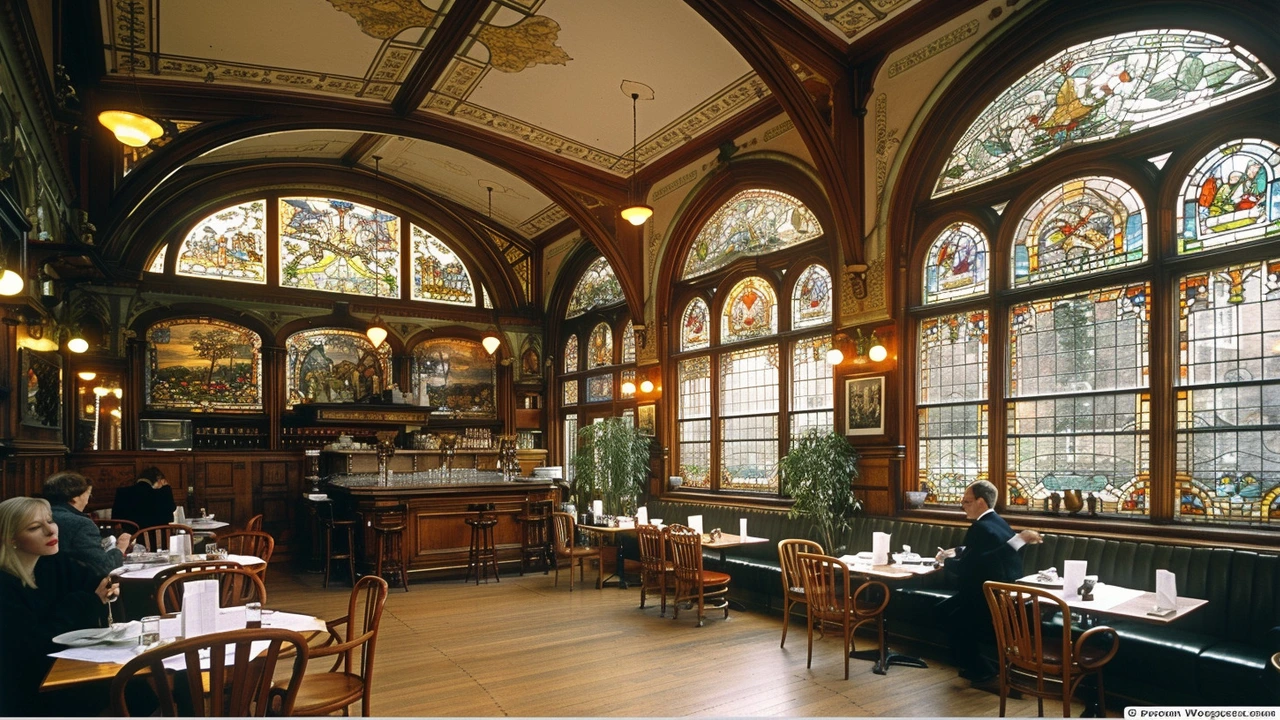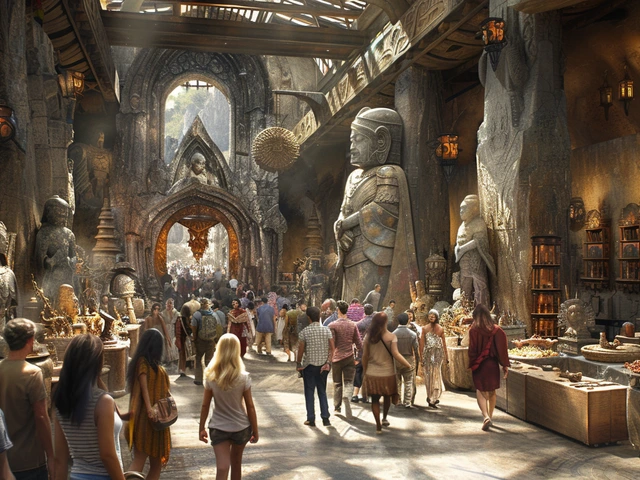The Origins and Philosophy of Art Nouveau
At the turn of the 20th century, a new design movement swept across Europe, leaving an indelible mark on the worlds of art, architecture, and decorative arts. Known as Art Nouveau, this movement sought to break down the barriers between fine arts and applied arts and to infuse everyday objects with aesthetic beauty and harmony. Born out of a desire to create a new style free from the imitative historicism that dominated the 19th century, Art Nouveau artists and designers drew inspiration from natural forms and structures, particularly the curvilinear lines of plants and flowers.
The philosophy of Art Nouveau was deeply rooted in the idea that art should be a part of everyday life, accessible to all and not just the elite. This principle guided the movement's practitioners as they designed everything from buildings and furniture to jewelry and posters. They believed that by surrounding ourselves with beauty in our everyday environments, we could elevate our quality of life. The movement's name, 'New Art,' reflects its forward-thinking and revolutionary approach to design and artistry.
Key Characteristics of Art Nouveau Design
What sets Art Nouveau apart are its defining characteristics: the use of organic, flowing lines, often referred to as 'whiplash' curves; an emphasis on natural motifs, such as flowers, plants, and insects; and the integration of handcrafted and artistic ornamentation. These elements combined to create designs that were both dynamic and harmonious, evoking the natural world in a stylized form.
In architecture and interior design, this manifested in structures and spaces defined by sinuous lines, stained glass windows featuring intricate botanical designs, and elaborate decorative details that seamlessly blended form and function. In the realm of graphic design, Art Nouveau had a profound impact as well, with artists like Alphonse Mucha leading the way in creating posters and advertisements that were visually stunning and highly stylized.
Influence on Modern Design
Fast forward to today, and the influence of Art Nouveau can be seen across the spectrum of design disciplines. In architecture, the movement's emphasis on blending buildings with their natural surroundings and using organic shapes and materials has resonated with sustainable and eco-friendly design practices. Interior designers continue to draw on Art Nouveau's principles to create spaces that are not only beautiful but also deeply connected to the natural world through the use of flowing lines, floral motifs, and artisanal touches.
In the realm of graphic design, the Art Nouveau legacy is evident in the ongoing popularity of intricate, nature-inspired illustrations and typography. The movement's approach to combining aesthetics with functionality is also a cornerstone of user interface (UI) and user experience (UX) design, guiding designers in creating visually appealing yet intuitive digital environments.
Case Studies: Art Nouveau in the 21st Century
Exploring specific examples of how Art Nouveau influences contemporary design can provide deeper insights into its enduring appeal. For instance, the fashion world frequently revisits Art Nouveau motifs, with designers incorporating its iconic floral patterns and sinuous lines into their collections, marrying modern materials and techniques with timeless elegance.
In architecture, the Art Nouveau-inspired Palais Garnier Opera House in Paris continues to inspire modern architects to incorporate organic forms and elaborate decorations in their projects, proving that the movement's ideals can coexist with cutting-edge engineering and sustainable building practices.
Practical Tips for Incorporating Art Nouveau Elements into Contemporary Design
For designers looking to infuse their work with the spirit of Art Nouveau, there are several practical approaches to consider. First, embracing the movement's emphasis on nature can lead to the incorporation of organic shapes and motifs into designs, whether in the form of natural lighting in architecture, floral patterns in graphic design, or botanical elements in fashion.
Utilizing modern technologies to reinterpret traditional Art Nouveau techniques and materials can also yield innovative results, such as using digital fabrication methods to create intricate decorative details that echo the handcrafted quality of the movement.
Conclusion: The Timeless Appeal of Art Nouveau
In conclusion, Art Nouveau's philosophy of integrating art into everyday life and its celebration of natural forms continue to inspire and impact designers across various fields. Its holistic approach to design, which combines functionality with aesthetics, remains a powerful guiding principle in the 21st century, demonstrating the timeless appeal and relevance of this captivating movement. By exploring and embracing the lessons of Art Nouveau, contemporary designers can continue to create works that are not only beautiful and functional but also deeply connected to the natural world and the human experience.



